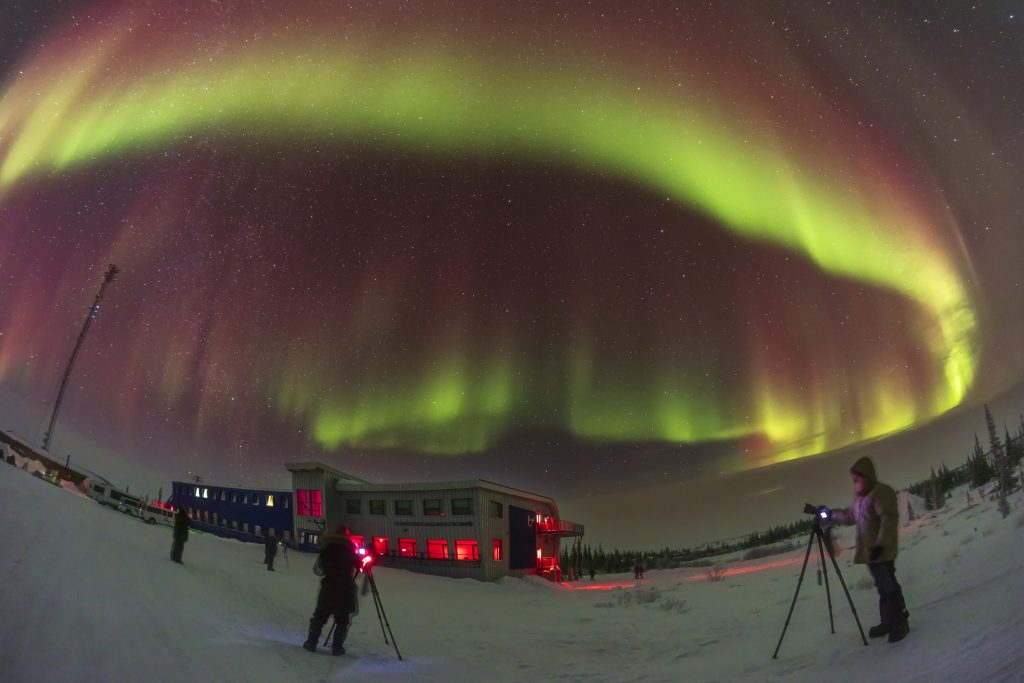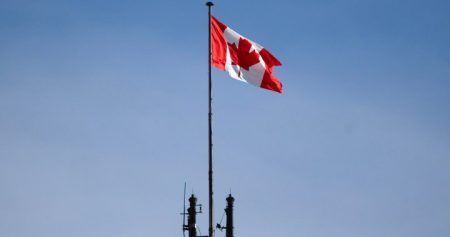A spectacular celestial event is poised to grace the New Year’s Eve sky for many in the United States: a strong geomagnetic storm is predicted to paint the night canvas with the vibrant hues of the Aurora Borealis, commonly known as the Northern Lights. This mesmerizing phenomenon, typically confined to higher latitudes, will be visible across an expansive swathe of the US, extending as far south as Iowa and Wisconsin, offering a rare and captivating spectacle for millions. This expanded visibility is attributed to the intensified solar activity predicted by the National Oceanic and Atmospheric Administration (NOAA), classifying the impending geomagnetic storm as a G3, indicating a strong intensity level.
The Northern Lights, a breathtaking display of dancing lights in the night sky, are a consequence of the sun’s interaction with Earth’s magnetic field. Charged particles ejected from the sun during coronal mass ejections (CMEs) travel through space and collide with Earth’s magnetosphere, a protective magnetic shield surrounding our planet. These energized particles then interact with gases in the upper atmosphere, primarily oxygen and nitrogen, causing them to emit light of varying colors. The result is a dazzling spectacle of shimmering curtains, arcs, and bands of light, predominantly green, but also featuring shades of red, blue, and violet, depending on the altitude and type of gas involved. Typically, these auroral displays are concentrated within the “Aurora Zone,” encompassing high-latitude regions like Iceland, Greenland, and northern parts of Scandinavia, Russia, and Alaska. However, the increased solar activity anticipated for this New Year’s Eve will extend the aurora’s reach significantly southward, making it a truly exceptional event.
The NOAA has issued specific guidance for optimal viewing, recommending the hours between 10 p.m. and 2 a.m. local time as the prime window for observing this celestial spectacle. While the northernmost states, such as Alaska, Washington, Idaho, Montana, North and South Dakota, Minnesota, and Michigan, will have the most vibrant displays, a significant number of other states, including Oregon, Wyoming, Nebraska, Illinois, New York, Vermont, New Hampshire, and Maine, stand a good chance of witnessing at least a glimpse of this ethereal phenomenon. The concurrence of a “Black Moon,” the second new moon in a single month, will further enhance the viewing experience by minimizing moonlight interference and creating an exceptionally dark backdrop for the auroral display. This rare combination of a strong geomagnetic storm and a dark night sky presents a unique opportunity for stargazers and enthusiasts across a wide geographic range to witness the magic of the Northern Lights.
The heightened solar activity responsible for this expanded aurora visibility isn’t just a fleeting event. According to NASA, 2024 has witnessed a surge in solar activity, bringing auroras to unprecedentedly low latitudes, even gracing the skies of Germany, the UK, and New York City. This surge is attributed to the sun approaching its solar maximum, a period of peak activity in its 11-year cycle. During this time, CMEs, the bursts of solar plasma that trigger geomagnetic storms, become more frequent and intense. The strength of these storms, classified on a scale from G1 (minor) to G5 (extreme), dictates the extent to which the aurora extends southward. The anticipated G3 storm for New Year’s Eve, therefore, promises a widespread and vibrant display, offering a rare treat for those located far from the usual auroral zone. The extended duration of the geomagnetic storm, expected to last for approximately three days, provides further opportunities for viewing on New Year’s Day and January 2nd.
Beyond the visual spectacle, these geomagnetic storms have practical implications. The NOAA is closely monitoring this week’s solar activity for potential disruptions to high-frequency radio communications, which are vital for airlines and amateur radio operators. While minor disruptions are possible, the primary impact of this G3 storm will be the breathtaking display of the Northern Lights. The NOAA’s vigilance underscores the importance of understanding and monitoring space weather, as these solar events can affect technological systems on Earth.
The anticipation surrounding this New Year’s Eve aurora is palpable, with experts and enthusiasts alike eagerly awaiting the celestial show. The NOAA’s prediction of a G3 storm, coupled with the dark skies provided by the Black Moon, creates a perfect storm for aurora viewing. The Space Weather Prediction Center has offered further guidance, recommending viewing just after sunset or before sunrise, emphasizing the importance of minimizing light pollution by seeking dark, rural locations and looking north for the best view. This confluence of factors promises a memorable and perhaps once-in-a-lifetime opportunity for many to witness the enchanting dance of the Northern Lights. The spectacle is expected to continue into 2025, as the sun remains in its active phase, suggesting further opportunities for aurora sightings even in more southern locations. This extended period of heightened solar activity provides an exciting prospect for skywatchers, offering the potential for more frequent and widespread auroral displays in the coming year.










